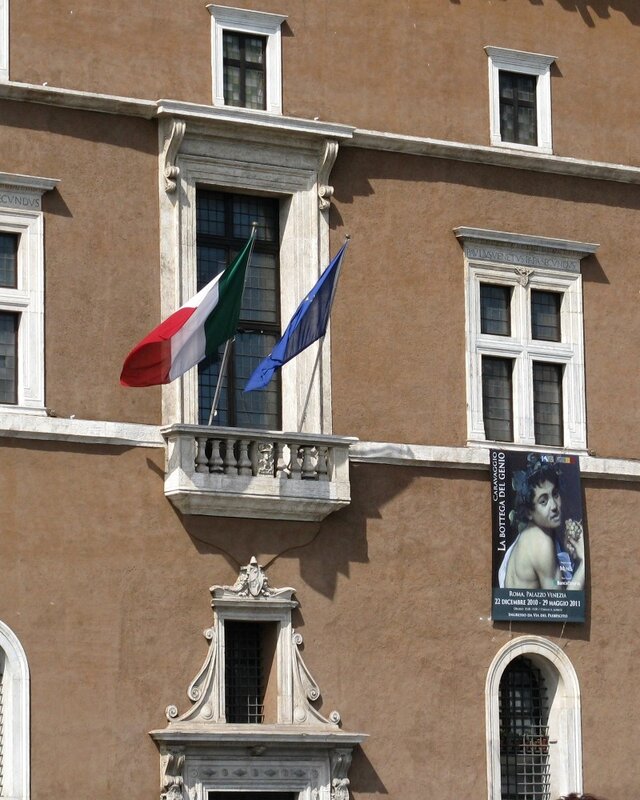Piazza Venezia
The street of the Imperial forums led us to the square of Venice, probably the most famous of the squares in Rome. The square is located at the foot of the Capitoline hill, where the road connecting Rome with the Northern provinces began, built in the 220 century BC by Gaius Flaminius (the Flaminian road).

In 1455, the Venetian cardinal Pietro Barbo, who later became Pope Paul II, built a Palace here, where the Embassy of the Republic of Venice was located (Palazzio di Venezia on the map). This gave the square its name. In 2009, during the construction of the metro station, the remains of the school of rhetoric that existed under Emperor Hadrian, known as the Athenaeum, were found in the middle of the square. This educational institution is considered the prototype of universities.

During the fascist dictatorship, the Palace became Mussolini's residence, from this balcony he delivered his fiery speeches. It is widely known and filmed speech on July 10, 1940, when the Duce announced the beginning of war with France and great Britain. Now the Palace houses the Museum of decorative arts (national Museum of The Venetian Palace).

На другой стороне площади находится здание крупнейшей Италии страховой компании Ассикурацинои Дженерали (Palazzo delle Assicurazioni Generali). Здание построено в 1911 году, во многом копирует стиль Венецианского дворца.

The lion figure on the company's coat of arms is borrowed from one of the bastions of Padua.

Beyond the Generali Palace, you can see the square of the Holy Apostles and the building of the della CERA wax Museum, and even further - the building of the former national theater of the 19th century.

At the turn of the 19th and 20th centuries, the square was dominated by the grandiose monument of Vittoriano, built in honor of king Victor Emmanuel II, thanks to whom Italy became a single state. About the history of the monument-in the next article.
